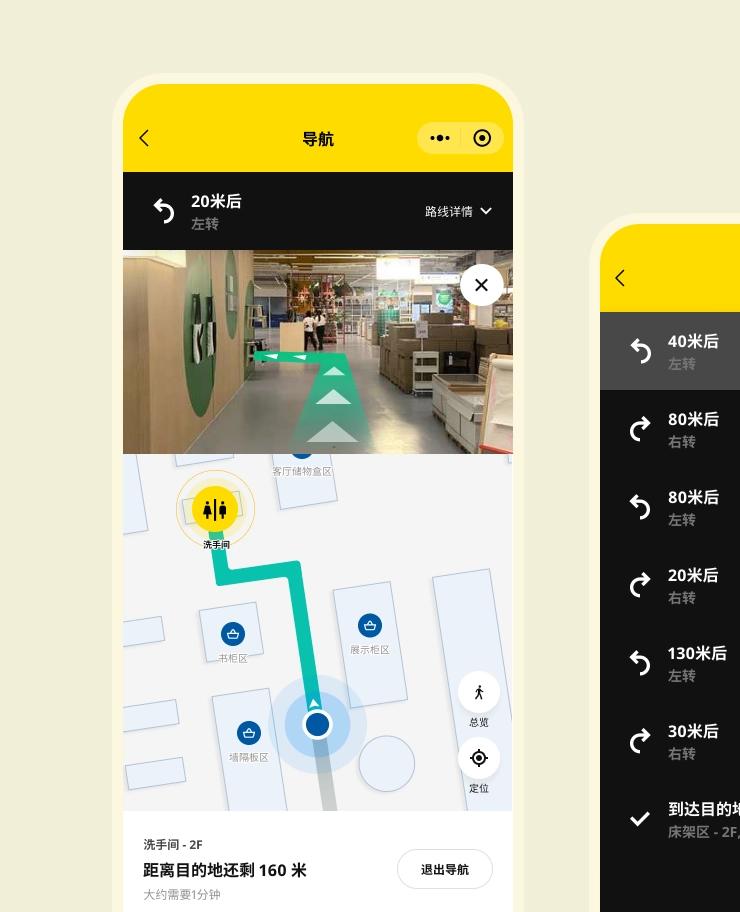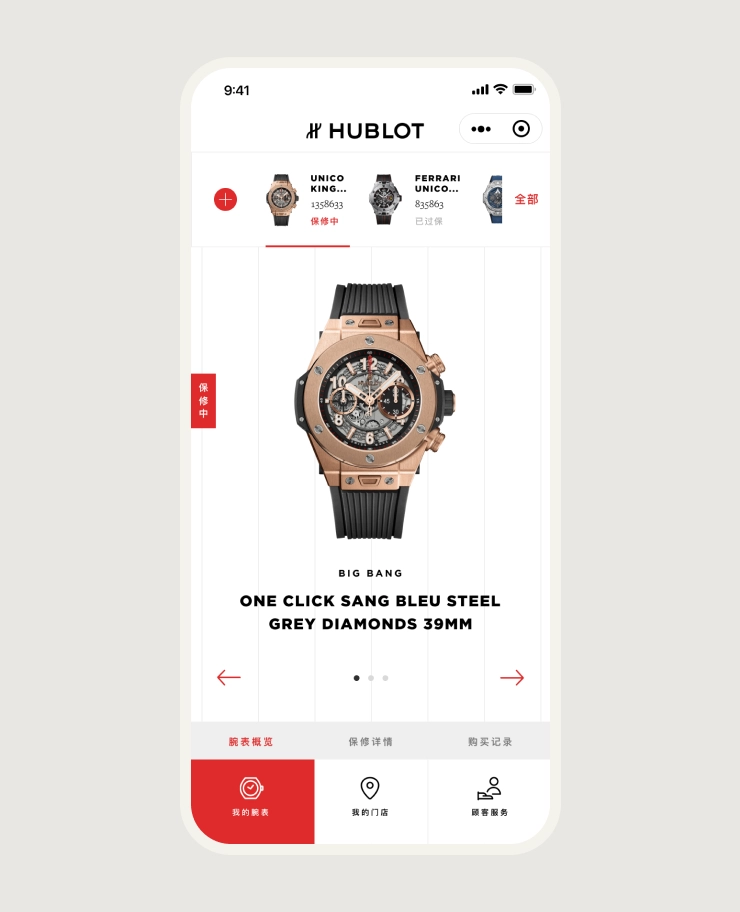Why Skipping the Discovery Phase is the #1 Reason Startups Fail
July 25th, 2023 · Written by Zippora Lau

Did you know that 9 out of 10 startups fail? This startling statistic keeps many aspiring entrepreneurs awake at night.
In the fast-paced world of digital product development, success is elusive, and the journey is full of challenges. However, one critical misstep plagues countless ventures from the beginning: skipping the discovery phase.
Most startups build on shifting sand instead of a sturdy foundation without talking to customers, analyzing competition, mapping requirements, and assessing feasibility. Trying to navigate the turbulent waters of the startup world without a discovery phase is akin to sailing across the ocean without a map, a compass, or a clue. Your ship might veer off course, get caught in a storm of unforeseen challenges, and end up stranded on a deserted island of missed opportunities. Cast away the possibility of failure and set sail confidently through the steady waters of a well-considered discovery phase.
Follow our guide to learn why discovery is crucial for any new venture.
What Is The Discovery Phase, And Why Is It Important?
The discovery stage is a crucial phase in the development process that bridges the gap between conceptual ideas and practical implementation. It encompasses understanding and gathering the client's requirements, researching the target audience's needs, and analyzing the potential product benefits for users.
What are the key benefits of conducting a comprehensive discovery?
Conducting a comprehensive discovery gives digital products the best chance of delighting users and gaining traction in a crowded marketplace through thorough upfront planning.
Here are some of its key benefits:
- You will mitigate potential risks.
By deeply analyzing technical complexity, security needs, market competition, and capability gaps, you can identify risks early and either avoid them or prepare contingency plans. Discovery helps ensure no major storms will catch you off guard later and jeopardize your product.
- You will build a market-driven product.
Discovery puts your users at the center of empirical research. You gather hard data from your target users about their pain points and needs. This focus on delighting users drives product-market fit and early adoption. Your solutions will resonate because they’re grounded in user insights.
- You can build prototypes and validate the product quickly.
The discovery stage allows you to rapidly test concepts and build interactive prototypes to validate product direction with real users. Early testing means you can gather feedback and refine approaches while the product is still flexible and adapting to learnings—no need to wait until after all the programming when changes pile up.
- You can create a great user experience from the get-go.
By collaborating with UX designers early in discovery, you can map intuitive user flows, wireframes, and information architecture tailored to user needs. This thoughtful UX approach means your product experience will resonate with users from the very beginning.
- You will establish efficient cooperation between teams early on.
Cross-functional collaboration in discovery gets all relevant experts and teams on the same page. Together you align on strategy, head off misalignments, and hit the ground running on execution. Smoother coordination means faster innovation cycles and less waste.
- You will have a clear development roadmap and established KPIs.
Thorough planning in discovery means you create development roadmaps rooted in realities, not hopes. Your timelines, sprints, and milestones will reflect genuine priorities, resourcing needs, and technical complexity. Tracking progress will be clear because your KPIs directly correlate to your goals.
Primary goals of the discovery stage
Digital products like web and mobile apps may seem easy to jump right into the building. But without thoughtful planning, digital products carry high risks of failure. Limitations around technical architecture, integration complexity, usability issues, and market validation are difficult to reverse once live. Given the fast pace of digital, delays equate to lost opportunity. That's why digital products benefit immensely from comprehensive discovery planning before engineering kicks off.
In essence, discovery primes the pump for smooth digital product development and innovation. Here are some of the critical goals of the discovery phase:
-
Understand the core user problems or needs the product aims to address through research, interviews, surveys, etc.
-
Identify the target users and map out detailed personas and behaviors. Gain empathy for their perspectives.
-
Define the minimum viable product (MVP) scope and set of features that can validate the product concept quickly.
-
Conduct competitor analysis to evaluate the strengths and weaknesses of existing solutions.
-
Determine technical requirements and feasibility analysis around front-end, back-end, infrastructure, etc.
-
Research relevant market data, growth projections, and product demand indicators.
-
Create user flows, information architecture, and wireframes to explore possible design solutions.
-
Establish success metrics and KPIs to track performance against goals.
-
Create a development roadmap, resourcing plan, budgets, and timelines for building the product.
-
Identify platform partners, third-party integrations, and other critical execution needs.
-
Reduce downstream risks by addressing potential issues early on.
-
Gather feedback from users and stakeholders to refine concepts before dedicating significant resources.
A Step-By-Step Guide To Conducting The Discovery Phase For A Digital Product
Creating a remarkable digital product is an exhilarating yet complex endeavor. Picture this: a team of visionary minds, designers with an eye for beauty, developers with coding prowess, and strategists ready to conquer the market. But before the magic of creation can truly begin, there lies a crucial phase that lays the foundation for success – the discovery phase. This is where dreams meet reality, and ideas take shape through comprehensive research, meticulous planning, and collaboration of multiple professionals.
Who is on the discovery team?
The composition of the Discovery team may vary depending on the project's specific requirements and scope. However, certain key members play vital roles in conducting and overseeing the entire discovery phase of a software project.
-
Product Managers: They lead the discovery phase, define project objectives, and ensure the product aligns with business goals and user needs.
-
UX/UI Designers: They conduct user research, create user personas, and design the digital product's interface, focusing on optimal user experience and usability.
-
Developers and Technical Specialists: They assess the technical feasibility, identify challenges, and help determine the architecture and technology stack for the product.
-
Security Specialists: They assess potential security risks and implement measures to ensure the product's security and data privacy.
-
Project Managers: They oversee the discovery phase, coordinate activities, and ensure the project stays on track regarding scope, timeline, and resource allocation.
-
Marketing Specialists: They provide insights into market trends, competitive analysis, and user acquisition strategies, influencing the product's positioning and marketing efforts.
What is the general process for a successful discovery phase?
Launching a successful digital product takes careful planning and preparation. The discovery phase is crucial for aligning goals, understanding users, evaluating feasibility, and minimizing risk. Follow this comprehensive 8-step guide to steer your digital project discovery effectively:
- Assemble Your Dream Team
Kick off your project by handpicking a skilled cross-functional team. Bring together key roles like project managers, UX designers, developers, product owners, and relevant subject matter experts. Building a collaborative dream team provides the diverse expertise to tackle discovery from all angles.
- Lock Down Your Digital Destination
Clearly define the core goals and desired outcomes for your project. Paint a vivid vision that inspires and rallies your team. Outline success metrics and KPIs to chart progress. A concrete destination provides direction and keeps your project on course.
- Climb Into Your Customers' Shoes
Empathize with users through interviews, surveys, persona mapping, and usability testing. Gain a first-hand understanding of your target users' needs, frustrations, and motivations. Craft detailed user personas to guide decisions. User-centricity should permeate every stage.
- Examine the Competitive Digital Landscape
Conduct competitive analysis on rival products, services, and sites. Evaluate their strengths and limitations. Identify gaps and opportunities to differentiate. Learn from what engages their users. Competitor intelligence helps you stand out in crowded digital spaces.
- Map the Core Digital Features
Prioritize must-have features and key functionality for your minimum viable product (MVP) based on user needs. Categorize additional capabilities into priority tiers using techniques like MoSCoW prioritization. Keep your MVP focused on the core essentials.
- Assess Technical Limitations
Involve developers and engineers early. Evaluate technical feasibility, dependencies, integration needs, and other considerations. Aim to match scope with your team's capabilities and resources. Addressing technical constraints reduces downstream roadblocks.
- Craft Intuitive Digital Experiences
Collaborate with UX designers to map user flows, wireframes, and prototypes. Ensure your product's information architecture and interface design delights users and match mental models. Usability and findability drive digital engagement.
- Plan Your Digital Voyage
Define your discovery roadmap, including research, design sprints, stakeholder reviews, and go/no-go decision points. Outline realistic timelines with measurable milestones. Careful planning provides the guiding star to navigate discovery smoothly and steer into the build phase.
What Could Potentially Happen If You Skip Discovery
Increased Risks and Challenges
Skipping discovery leaves you vulnerable. Technical limitations, integration issues, capability gaps, and budget overruns can arise as unwelcome surprises without thorough advance analysis.
Poor Understanding of User Needs
Without research time spent directly engaging your target users, your product priorities become based on internal assumptions instead of empirical data. This dramatically increases the chances of misalignment between critical user needs and the solutions you deliver. Gaps in understanding user perspectives lead to products users don't enthusiastically adopt.
Unclear Project Goals and Scope
When you jump right into build mode without aligning on strategy and requirements, ambiguity around direction and outcomes arises. Teams operate with different assumptions. Keeping project scope focused requires planning based on clear goals - challenging without discovery.
Inefficient Resource Allocation
Entering execution with unrealistic timelines or inadequate budget allocated leads to scrambling and crunch periods. Technical challenges surface that existing capabilities can't address. The right expertise and skills may be missing. Discovery provides data to plan resources wisely.
User Experience Issues
Without collaboration with UX designers, products often become clunky and confusing for users. Band-aid solutions degrade interfaces over time.
Missed Opportunities and Competitive Disadvantages
The competitor and market analysis conducted in discovery can reveal valuable openings to address unmet needs, incorporate new technologies, or employ innovative designs. Skipping discovery means you may miss ways to leapfrog competitors.
Increased Development Costs
Additional rework cycles and scope changes are inevitable when the project direction has not been thoroughly analyzed and locked down. The cost of changes in the execution phase skyrockets compared to discovery flexibility. Avoidable disputes also waste valuable time.
Project Failure
Ultimately, all the compounding issues above greatly raise the chances of failure - either through blowing budgets and timelines or delivering a product that entirely misses the mark. Discovery failure is the number one cause of overall project failure.
What to Expect When Conducting a Discovery Phase With Digital Creative
- We Embrace Agile Methodology
Adopting an agile approach during the discovery stage allows you to be flexible and responsive to changes. Frequent iterations and feedback loops help refine your ideas, uncover new insights, and make quick adjustments, accelerating progress and reducing wasted efforts.
- We Engage With the Stakeholders Early and Often
We keep the stakeholders involved and engaged throughout the discovery phase. Regular meetings, presentations, and updates ensure alignment with project objectives and minimize surprises during subsequent stages.
- We Conduct Thorough User Interviews and Document Observations
We don't just rely on surveys and data; we engage directly with your target users through interviews and observations. Observe their interactions with existing products, listen to their feedback, and immerse yourself in their world. This hands-on approach adds depth to your understanding and unveils hidden opportunities.
- We Create an Effective Design System
We establish a design system with a library of reusable UI components, typography, colors, and design guidelines. This streamlines the design process and ensures consistency, saving time and effort during development.
- We Prioritize Features Strategically
We know how to prioritize features based on their impact and complexity. Focus on those that align with your project goals and have the highest user value. Remember, less can be more in the early stages.
- We Validate Assumptions Through Prototyping
We build prototypes to test your assumptions and ideas with real users. This low-cost validation helps uncover flaws, gather feedback, and verify the viability of your concept before investing heavily in development.
- We Encourage Cross-Functional Collaboration
We foster collaboration between team members from different disciplines, such as design, development, marketing, and product management, to address every need your in-house team and your project require. Their diverse perspectives and insights enhance problem-solving and lead to more well-rounded solutions.
- We Leverage Data and Analytics
Use data and analytics to inform your decisions during the discovery stage. Analyze user behavior, website traffic, and industry trends to gain valuable insights that drive your project's direction.
- We Stay Customer-Centric
We keep your users at the heart of all critical decisions. We always ask, "Will this benefit your users?" and "Does this align with their needs?" A customer-centric approach ensures your product remains relevant and valuable.
- We Document Everything
We document all your findings, decisions, and learnings during the discovery stage. This knowledge then translates into clear and tangible deliverables driving your project’s success. You receive functional roadmaps, wireframes, technical requirement specifications, customer journey maps, and more. These are all valuable resources for future reference and ensure continuity as the project progresses.
- We Are Open to Feedback and Iteration
We always embrace feedback openly and are prepared to iterate on your ideas. A growth mindset allows constant improvement and maximizes the value of the discovery stage.
How Much Time And Money Does The Discovery Phase Require?
The time and cost required for the discovery phase can vary depending on the complexity of the digital project, its objectives, and the depth of research and analysis needed. Here are some factors to consider when estimating the duration and cost of the discovery phase:
-
Project Complexity: More complex projects with a wide range of features and functionalities may require a more extended discovery phase to understand and plan the development process thoroughly.
-
Project Scope: The scope of the project, including the number of user personas, features, and platforms, will impact the time and cost of the discovery stage.
-
Research and Analysis: Extensive user research, competitor analysis, and technical feasibility assessments will increase the duration and cost of the discovery phase.
-
Stakeholder Involvement: The level of involvement and availability of key stakeholders can influence the speed of decision-making and progress during the discovery phase.
-
Team Expertise: A skilled and experienced team that can efficiently conduct research, analysis, and prototyping can expedite the discovery process.
-
Prototyping and Validation: The number of prototypes and the extent of validation required to test ideas and gather feedback will affect the time and cost.
-
Iterations and Feedback Loops: The number of iterations and the frequency of feedback loops will impact the overall duration of the discovery phase.
As a general estimate, the discovery phase can take anywhere from a few weeks to a few months, depending on the factors mentioned above. It is essential to allocate sufficient time for a thorough discovery process to ensure a well-informed and successful project.
Regarding cost, it is challenging to provide an exact figure, as it varies significantly based on project complexity, team size, expertise, and the extent of research and prototyping involved. However, the discovery phase typically represents a small percentage (around 5% to 10%) of the project budget.
To get a more accurate estimate of the time and cost required for the discovery phase of your specific project, contact us and get a consultation with one of our experienced project managers; we can help you assess your project's unique requirements and provide a tailored proposal.
Investing in a comprehensive discovery phase can lead to significant savings and efficiencies in the subsequent development stages, making it a valuable investment for the success of your digital project.
Have a project in mind?
Join our newsletter!
Get valuable insights on the latest digital trends, strategies, and developments in China and globally delivered straight to your inbox.

